Objects
Sunspots
Areas seen as dark spots on the surface of the Sun. Their size and shape change day by day, small spots are 1000 km in diameter, the largest ones can reach a size of 70.000 km and more in diameter and are visible without the aid of telescopes.
They appear dark because they are cooler than the surrounding surface. Temperature in the centers of sunspots drops to about 3700 kelvin (K) compared to 5700 K for the surroundings. The reason is an extremely strong magnetic field that arises from the solar interior and inhibit convection. The average magnetic field in sunspots is 3000 gauss (G) compared to 1 G for the surrounding solar surface (Earth magnetic field is 1 G). The field is strongest in the darker parts of the sunspots - the umbra. The field is weaker and more horizontal in the lighter part - the penumbra.
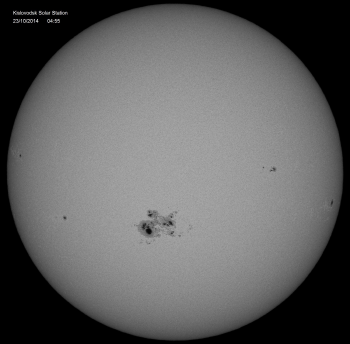
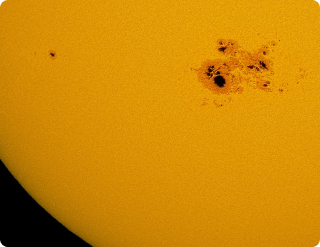
Sunspots typically appear in groups and last for several days, although very large ones may be seen for several weeks. The number of sunspots varies with about 11-year periodicity from almost total absence at the minimum to hundreds at the maximum. The monthly or yearly average number of sunspots and sunspot groups (called Wolf’s number) is an important index that indicates the level of solar activity.
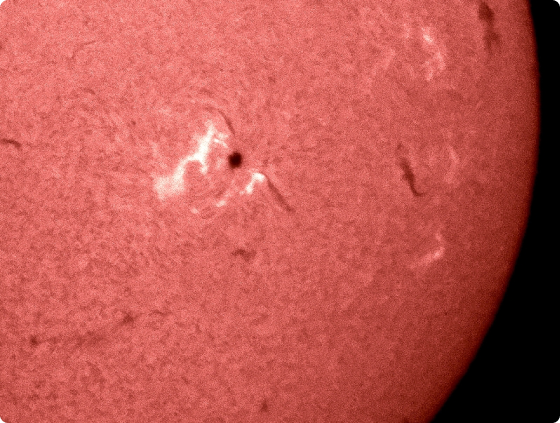
Plages
Bright patches surrounding sunspots that are best seen through filters passing the spectral light of hydrogen (H-alpha) or calcium.
Plage is French for "beach", because each plage looks like light-colored sand against the darker structures around them. Plages represent regions of higher temperature and density within the middle layer of the Sun’s atmosphere - chromosphere.
Daily full-disk observations of plages result in the solar Ca II K index that reflects the magnetic activity of the Sun. The Ca II K index shows a similar course with the solar cycle as, for instance, the Wolf’s sunspot number. Remarkably, observations of the Ca II K index were started far before the first direct measures of the solar magnetic field that makes them important for a variety of retrospective analyses of the state of the solar magnetism.
Filaments
Dark lines or curves on the surface of the Sun that are best seen through filters passing the spectral light of hydrogen (H-alpha). Filaments are actually huge arcs of plasma (electrified gas) in the Sun's atmosphere. They look dark because they are cooler compared to the surface of the Sun behind them. Arcs are held in place by powerful magnetic fields usually above sunspots. Filaments can last for several days and sometimes up to months. They are most common at the maximum of solar cycle when the Sun's magnetic field is very active. Some of them erupt and break apart, giving rise to coronal mass ejections. Ejected material streams out through the interplanetary medium impacting any planet or spacecraft in its path. In particular, it causes magnetic storms and auroras on Earth.
It is rather difficult to recognize arched structure of filaments when we observe them in the middle of solar disk (arch appears as line or curve only). However, arched structure becomes clear when it is seen above the solar limb. Arches above the solar limb area also called prominences, but actually filaments and prominences are the same feature - just viewed from a different angle.
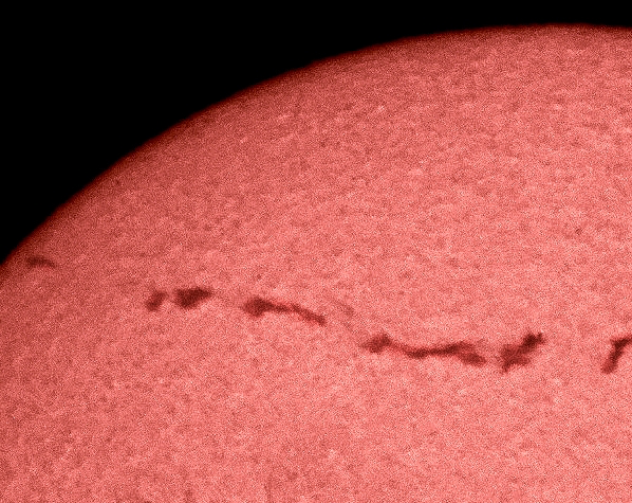
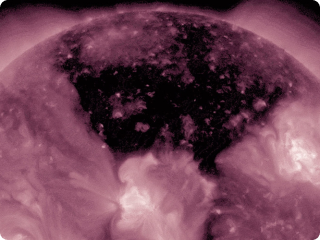
Coronal holes
Dark areas in the outer atmosphere of the Sun (solar corona) best seen in extreme ultraviolet and soft x-ray solar images. They appear dark because they are cooler than surrounding plasma. Coronal holes occur when the Sun's magnetic field is open to interplanetary space rather than looping back to the Sun’s surface. Ionized material can flow easily along such a path and escape into interplanetary space generating high-speed solar wind. Plasma density in coronal holes is exceptionally low, which allows solar wind to escape more readily into space through these ”gaps”.
Coronal holes are more common and persistent at the minimum of solar activity. They can last through several solar rotations (27-day periods). They are most prevalent and stable at the solar north and south poles. Coronal holes located at or near the solar equator are most likely to be the source of high-speed solar wind that causes geomagnetic storms.
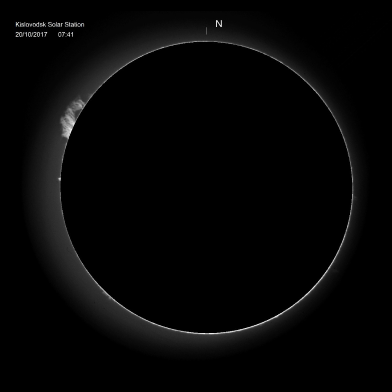
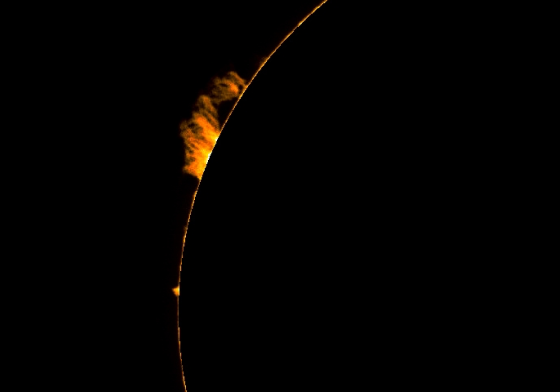
Prominences
Bright arched structures seen above the solar limb against the dark background of space. Although prominences appear to be very bright and hot, they are actually much cooler and denser than the surrounding plasma in the Sun's outermost atmosphere (corona). The intricate arched structure of prominences is shaped by the Sun's magnetic field and can extend for many thousands of kilometers. Prominences last for several days and sometimes up to months. Some of them erupt and break apart, giving rise to coronal mass ejections. Ejected material streams out through the interplanetary medium impacting any planet or spacecraft in its path. In particular, it causes magnetic storms and auroras on Earth.
When we observe prominences not above the solar limb but against the bright background of the Sun itself, they appear as dark lines or curves and are called filaments. Actually filaments and prominences are the same feature, they just have different names due to their positions and backgrounds.
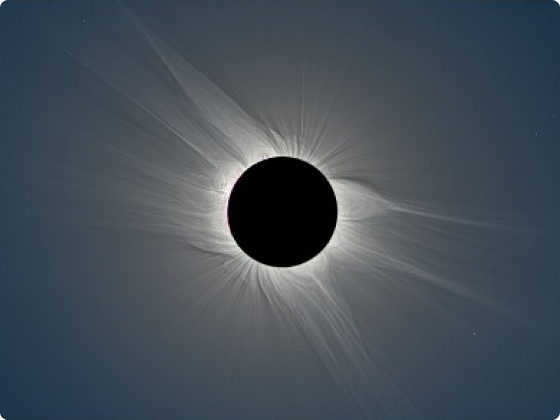
Corona
Outer atmosphere of the Sun. It extends many thousands of kilometers above the Sun, gradually transforming into the solar wind that flows outward through our solar system. Normally we cannot see the corona due to the much brighter surface of the Sun. The only moment the corona briefly comes into view is during total solar eclipse. At other times astronomers observe corona with special type of telescope called coronagraph.
The corona consists of an extremely hot but very tenuous plasma. Its temperature is more than a million degrees, surprisingly much hotter than the temperature at the Sun's surface which is about 5700 K. However, one could hardly burn himself in the corona because the pressure and density in the corona is many times lower than in Earth's atmosphere.
Observation of the corona allows to compute the coronal index that measures radiant energy emitted within the Fe XIV spectral line (green coronal line). It is the emission from excited, ionized iron atoms. The coronal index characterizes the coronal activity of the ‘‘Sun as a star’’ and represents the total irradiance of the green corona emitted by the Sun’s visible hemisphere. The periodic character of coronal index shows a similar course with the solar cycle as, for instance, the Wolf’s sunspot number.